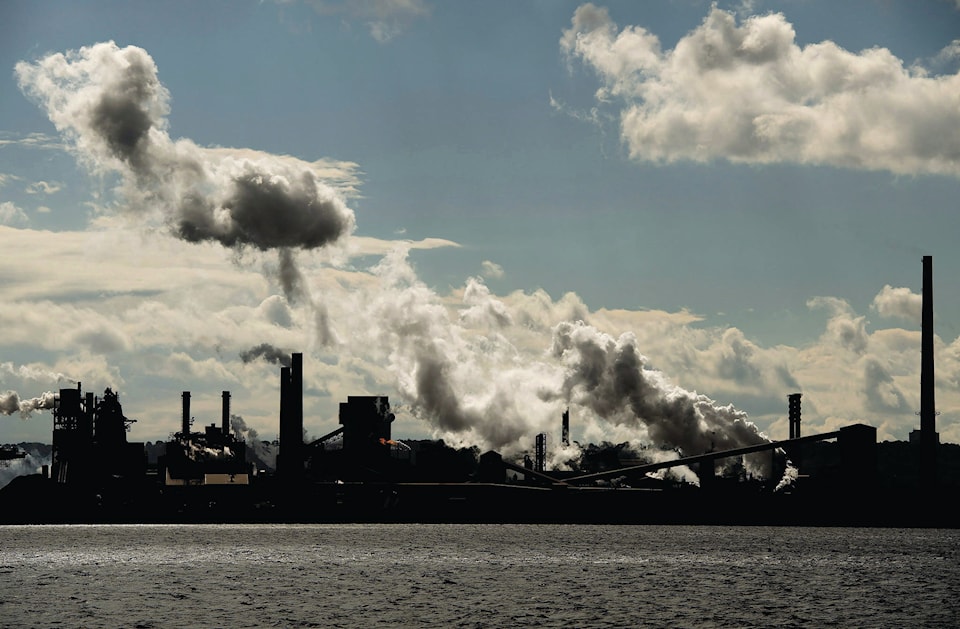We have not one but two crises on our hands: COVID and global warming.
The COVID crisis is immediate, it has killed 550,000 in North America alone. Global warming is coming slowly but inevitably, we are still headed for a 1.5 C tipping point. That tipping point will make COVID look like a mild flu season.
We will lose the ice sheets in the Antarctic and Greenland, the permafrost will melt and the Amazon rainforest will burn.
What happens if we reach this tipping point? We will lose the West Antarctic ice sheet, which will cause a rise in sea level of three metres. We lose the Greenland ice sheet which could add seven metres of additional sea level rise. The Amazon rainforest could dry out due to changes in rainfall and catch fire, releasing enormous amounts of carbon dioxide into the atmosphere. The permafrost here in Canada contains methane, a greenhouse gas 20 times more potent than carbon dioxide. When the permafrost melts, it releases that methane, a one-way process that will further accelerate global warming.
READ MORE: Arctic tundra emits more carbon in winter than plants can absorb in summer: study
There are 7.8 billion people in this world. Global warming is already thought to be causing 150,000 deaths annually, which is expected to double by 2030. These deaths arise from three sources: rising temperatures causing more deaths from malaria and dengue fever, changes in weather patterns resulting in malnutrition and diarrhea, and finally deaths from natural disasters such as heat waves, floods, typhoons and hurricanes. If global warming deaths affect millions of people why do COVID deaths strike us as more immediate? They are happening closer to home and, unlike global warming, the cause on the death certificate can be clearly specified as COVID.
Unfortunately for the planet COVID is not having any meaningful effect on our carbon emissions. Initially during the April 2020 lockdown, there were indications that we were releasing 15% less carbon than a year earlier, but humans, being adaptable, learned how to live under restrictions and now it is expected that 2020 carbon emissions will be within 5% of 2019.
What should we be doing locally to fight long term carbon emission, even during a health crisis? British Columbia should continue to raise the price of carbon. If you aren’t familiar with carbon pricing you should know that British Columbia is a model world wide for pricing carbon emissions. Here’s how it works. Starting in 2008 BC added a $10/tonne (about 2.5 cents per litre on gasoline) tax to all purchases of fossil fuels (this covers most of BCs carbon emission, about 70%). That tax was increased steadily over the years, through both Liberal and NDP governments. The tax is mostly revenue neutral — rather than put the money into the general government coffers, rebates were given to the people most affected by the tax, in lower business taxes, personal taxes and the Low Income Climate Action tax credit. Recently some of the funding has been used to fund further emission-reduction projects in industry.
The same drive that has us shopping at Walmart for low prices can be harnessed to cut back on fossil fuel use
The effect of this carbon pricing has been a flat or reduced amount of fossil fuels. Why does this work? People are sensitive to the price and choose ways of avoiding using fossil fuels. The human nature that pushes us to lower prices at Walmart and Amazon, or has us driving across the town to a cheaper gas station can be harnessed to cut back on our fossil fuel use.
READ MORE: Okanagan faces increased temperatures, flooding: climate projections report
Most importantly, BC’s economy and population has grown without also increasing the amount of carbon being produced — proving that an even-handed application of carbon pricing can be done without damaging the economy. BC’s NDP government intended to stick to the schedule by raising carbon in April 2020 and April 2021 but has postponed both increases (about one cent per liter) due to the COVID crisis.
That is really unfortunate because as bad as COVID has been, the impact of global warming is orders of magnitude greater. Don’t let COVID take your eye off the ball — if we want to keep the earth habitable for humans we need to persevere at slow and steady changes — including the BC Carbon Tax.
Missed last week’s column?
Dyer: Financing energy efficiency
Kristy Dyer has a background in art and physics and consulted for Silicon Valley clean energy firms before moving (happily!) to sunny Penticton. Comments to Kristy.Dyer+BP@gmail.com
Kristy’s articles are archived at teaspoonenergy.blogspot.com
